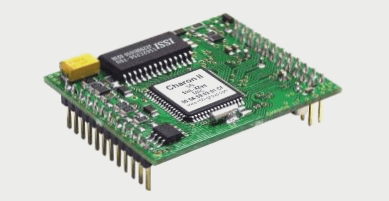Nickel plating is commonly used as a substrate coating for both precious metals and base metals on PCBs (Printed Circuit Boards). It is also frequently utilized as a surface layer for certain single-sided printed boards. In applications where surfaces are subject to heavy wear, such as switch contacts, using nickel as a backing layer for gold can significantly enhance wear resistance. Nickel is also effective as a barrier, preventing diffusion between copper and other metals. Combination coatings of nickel and gold are often employed as etching-resistant metal coatings, meeting the requirements of hot-press welding and brazing. Nickel is the only suitable corrosion-resistant coating for ammonia-based etchants without hot-press welding. PCBs requiring bright plating typically use bright nickel/gold plating, with a minimum Nickel plating thickness of 2.5 microns, typically ranging from 4 to 5 microns.
Low-stress nickel deposits on PCBs are commonly achieved through modified Watts nickel baths and nickel sulfamate baths with stress-reducing additives. PCB nickel plating is categorized into bright nickel and matte nickel (also known as low-stress nickel or semi-bright nickel), which require uniform and meticulous plating, low porosity, low stress, and good ductility.
Nickel sulfamate is extensively utilized as a substrate coating for metallized hole plating and printed plug contacts on PCBs. The deposited layer exhibits low internal stress, high hardness, and excellent ductility. Adding a stress reliever to the bath results in a coating with slightly reduced stress. Various sulfamate baths with different formulations are available, but nickel sulfamate is known for its poor stability and relatively high cost.
Modified Watts Nickel formulations typically include nickel sulfate, along with nickel bromide or nickel chloride for stress reduction. Nickel bromide is commonly used due to its ability to produce a semi-bright coating with slightly reduced internal stress and good ductility. This coating is easily activated for subsequent electroplating and is relatively cost-effective.
Low-stress nickel deposits on PCBs are commonly achieved through modified Watts nickel baths and nickel sulfamate baths with stress-reducing additives. PCB nickel plating is categorized into bright nickel and matte nickel (also known as low-stress nickel or semi-bright nickel), which require uniform and meticulous plating, low porosity, low stress, and good ductility.
Nickel sulfamate is extensively utilized as a substrate coating for metallized hole plating and printed plug contacts on PCBs. The deposited layer exhibits low internal stress, high hardness, and excellent ductility. Adding a stress reliever to the bath results in a coating with slightly reduced stress. Various sulfamate baths with different formulations are available, but nickel sulfamate is known for its poor stability and relatively high cost.
Modified Watts Nickel formulations typically include nickel sulfate, along with nickel bromide or nickel chloride for stress reduction. Nickel bromide is commonly used due to its ability to produce a semi-bright coating with slightly reduced internal stress and good ductility. This coating is easily activated for subsequent electroplating and is relatively cost-effective.




